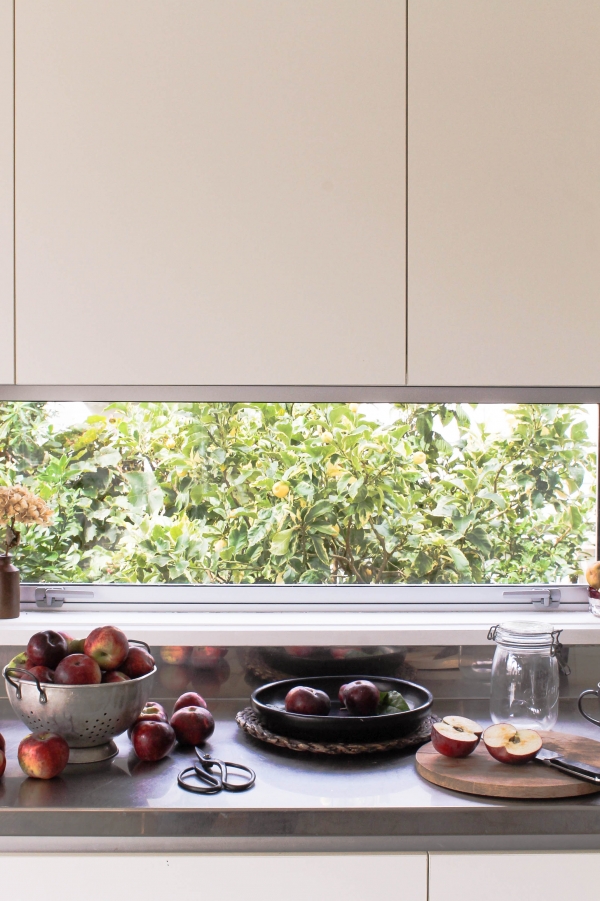6 Tips for building your first home
6 Tips for when you are thinking about building your first home
If you are about to launch into a new build there are many options available on the construction market, from Architect + reputable Builder, to design and build companies, to heading straight to a builder and his drafty. All of these suit different scenarios, but the built results are as different as apples and pears, and a few overripe bananas thrown in there for good measure. Making an informed choice is key to choosing the right path for your own build.
Often the sites available to purchase are owned by a developer with ready made option for building a house on the land - while in some cases this may suit exactly what you want, it is a good idea to look at your options carefully and outside of the 'laminated book of plans' or dressed up showrooms. If you are interested in a sustainable home it is worth investing in the services of someone trained in quality site-specific design such as an Architect. While this initially may seem a more expensive option, the last thing you want to be thinking when you are about to spend a huge amount of money on a new house is "it's not perfect but 'it will do'."
These are our 6 tips for when you are thinking about building your first home and our most commonly asked questions by new house builders who are interested in building sustainably but affordably.
Area.
My biggest tip for newbie home builders is not to be swayed by area. Now in some cultures this is king, but the reality is that If your meter squared area is fixed at the highest level and your budget is fixed at a lowest level this almost automatically ensures you are taking money away from the insulation, quality of materials and any customisation. For the investment you are about to make - do you truly want that? It is possible to design buildings that feel huge, are cost effective and yet have a small footprint - don't limit your options before you begin by setting in stone the build area.
Meter squared rates.
These are extremely rough tools at the beginning of a project to assess the projected cost of the project. They do not take into account land contours, site conditions, retaining, and location in the country. Most rates people mention are so outdated, or bear no relation to the images they have pinned on Pinterest. If you want a quality sustainable build, the m2 area is actually likely to be higher, but we can mitigate this by adjusting other elements of the build so that the cost difference is neutral. Base m2 rates for design and build options often include rock bottom fixtures and fittings - you will regularly be asked by the company if you want to 'upgrade' these.... and you almost certainly will once you see what those options are.
Design matters
How package design and build deals often work is that, if you are lucky, a forward thinking developer may have originally engaged an Architect to develop some prototypes for his subdivision (the Architects fee in this situation is spread over many many homes which are designed to the builders preferred recipe that reduces risk and maximises profit). When it comes to working with you on your site this plan is tweaked (perhaps you asked for another room or a scullery) and documented by a separate draftsperson in a cut and paste manner, unfortunately I have seen sometimes to a point where it fundamentally no longer works anymore (note both are working directly for the builder/developer, not you in this context). If a good Architect was involved at the beginning to customize the subdivision or the housing prototype this radically increases your chances of being happy with the outcome - but the reality is often that either an architect is not involved or it is targeted at a generic customer market for mass appeal and can be a watered down version of what is possible with a bespoke build (ironically for the same budget) .... But this leads onto my next point....
Budget for Design
Design adds value to your home, it is also a skill that takes time and expertise - it is very easy to see it as an additional cost, but if you are interested in a quality and sustainable result, engaging a professional at the design stage ensures that the house is tailored, customized, considered. You have a personal one on one service with an expert directly working alongside you on your home - who is as passionate about achieving the best quality result as you are. It means the home is of the highest quality and longevity you can afford - this will matter to you if it is a long term family home vs. an investment property, so its worth thinking about what your priorities are. Budget for quality design and ensure that this is there from the very start to consider light, form and proportion. It will make a fundamental difference to the end value of the house as well as how it feels and works on a daily basis.
Sustainability is not a tack-on option.
The reality is that natural resources are dwindling, construction material production causes a huge volume of pollution around the globe, water quality and fresh water quantity is becoming an urgent issue, and the cost of electricity is constantly rising. When you are building a new house the opportunity to improve the future living conditions on this planet goes far and beyond simply putting out the recycling bin every two weeks.... it has the potential to last for the lifetime of that building. An affordable sustainable house is possible and actually saves you money in the long run. New affordable homes being built in Special housing zones around Auckland are required to meet a 6 star homestar rating - many new "spec" build homes only achieve basic building code compliance achieve a 3 or 4 (in order to max out the area and cut costs to maximize profit - after all you can't 'see' the insulation), but why should your new home be of a lesser standard? Designing for energy use and sustainability goes more than just applying a veneer of more insulation to a 'fat' plan - it is a fundamental design choice right from the start and in the way the rooms are planned and designed to operate and catch the sun or ventilate. It's not a 'would you like fries with that' situation, so look beyond the kitchen and bathroom fit out specification, and make sure that this is clear in your brief from the beginning.
Architects and Architectural designers (draftspeople) are not the same.
Ok so this is a surprising question that I am often asked by new house builders in NZ (not overseas interestingly!). The level of education required is often an indication of the different levels of expertise, as does the different fees they charge. Architects train for 5 years at university (two degrees are required) plus a minimum of 3-4 years work experience and then a registration exam before they can call themselves Registered Architects (it is a legal term that is highly regulated - you cannot call yourself an Architect if you have not been through this process and you must continuously undertake training through your career to stay up to date). Their training involves intense design training, studying high performance buildings, heritage and urban design, legal contracts, documentation, project management etc. etc. ... the works they are licensed to design span from small homes to multistory buildings.
Architects are the professionals in design and construction who are trained to look after you from beginning to end including not only the quality of the spaces, but the materials, fittings, fixtures, energy performance, colours and light, kitchens, bathrooms, right through to checking the quality of construction and managing the contract with the builder. ... .They are not trained to 'just make something look pretty'. Architectural Designers (or Architectural Technicians, or Draftspeople) train for 2 years with the focus on documentation and working drawings, with only a small amount of training in design or contracts. You could also call yourself this if you had got partway through your architecture studies (3yrs). It is a similar skill difference to dentist/dental hygienist, Doctor/nurse, Vet/Vetinary Nurse.... all are extremely necessary in an industry, but have different roles to play and are trained in different levels of expertise. Get the picture? Decide what level of expertise you require for your build and what quality you want to achieve, and don't assume that you have an 'Architect' on board unless they are on the register.
The NZIA does a great job at promoting the fact that architects create high value architecture for multimillion dollar beach side properties, but not a great job at promoting the fact that the value of innovative design is also particularly important for sustainable and affordable new build homes within subdivisions and urban design.... this is something we are hugely passionate about. Architects are trained to think outside the box, to think of new ways of doing things that improve peoples living environments.
If you need further information about how to kick off the process check out our 'how to write a brief for an architect' or give me a call or email if you have any questions.
xxx
Lisa.



